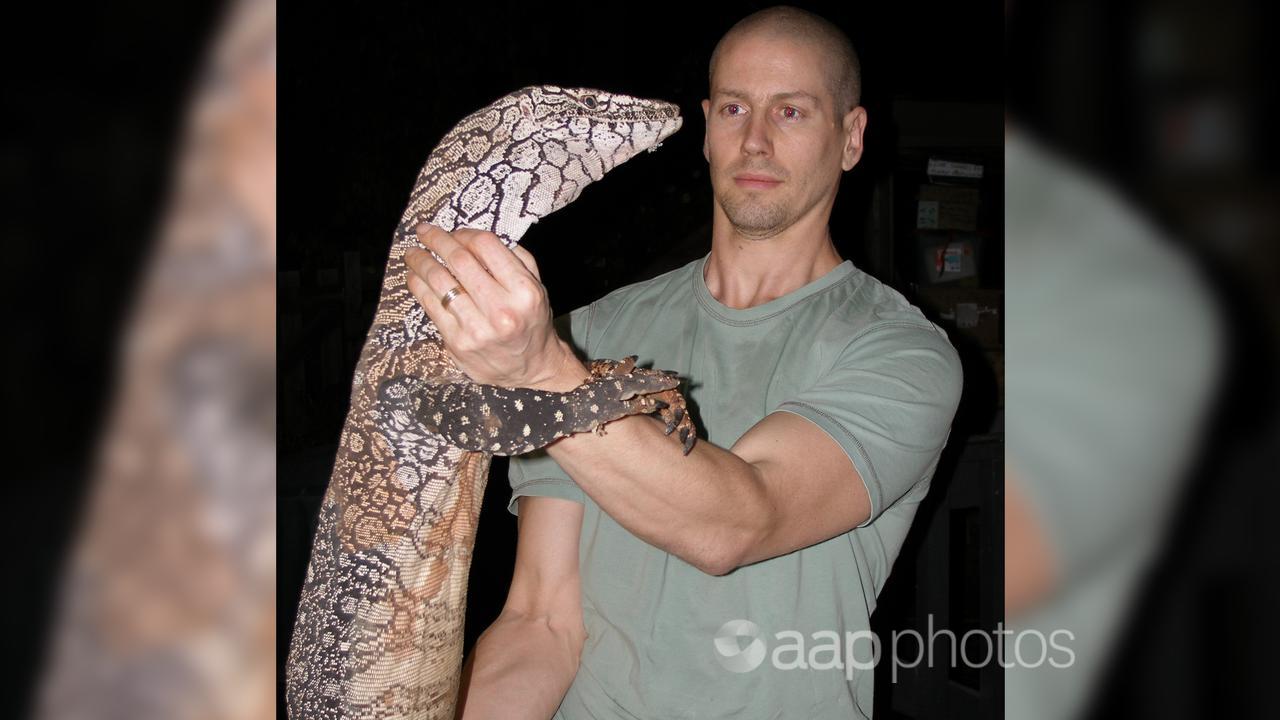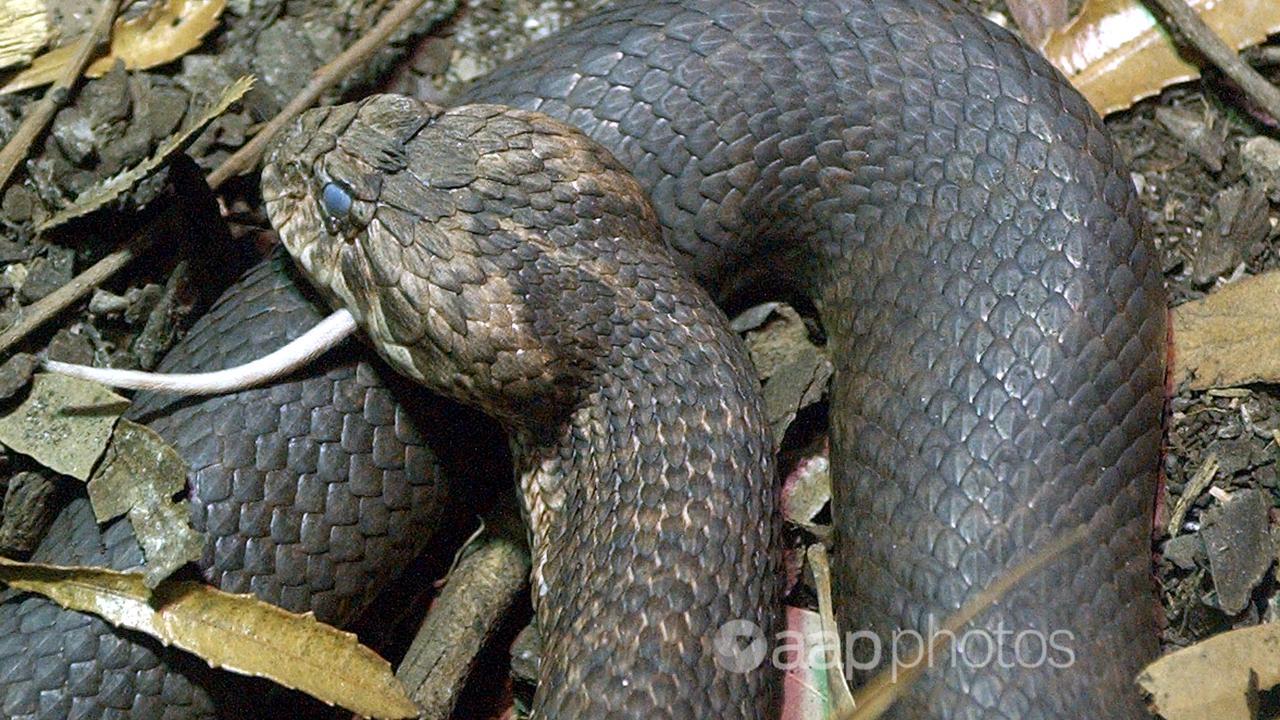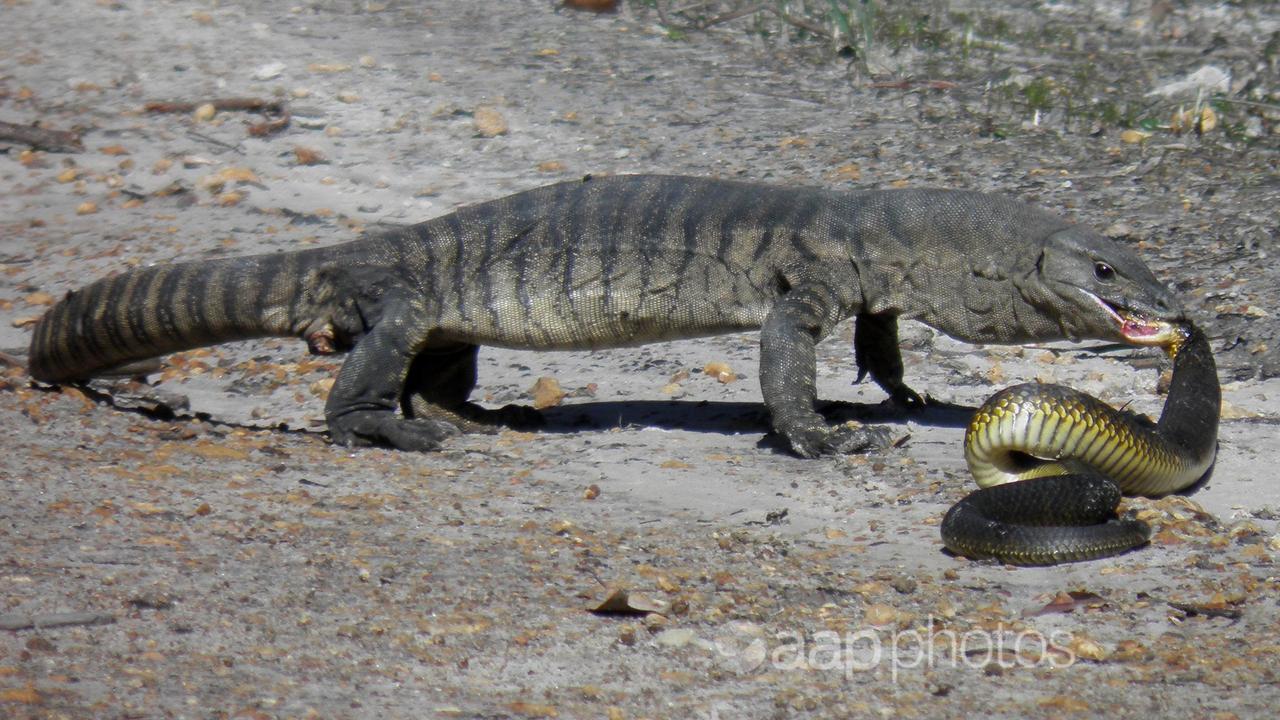Who hasn’t wondered who’d win a fight between a lion and a tiger, a crocodile and a shark or a gorilla and a bear? But how about an elusive giant perentie versus a long-fanged death adder?
Believe it or not, it’s a question at least one Australian scientist is keen to answer along with how such an epic encounter might be determined.
A University of Queensland study has shed light on the evolution of some lizards to resist deadly neurotoxins brandished by Australia’s most venomous snakes.
Led by UQ professor Bryan Fry, the research focused on interactions between death adders and other venomous serpents, and the varanid lizard species which includes perenties, Komodo dragons and goannas.
“Most large … monitor lizards that prey on venomous snakes have inherited neurotoxin resistance – a trait possibly connected to their predatory lifestyle,” Prof Fry said.
“To investigate, we modelled a natural snakebite interaction on varanid lizards by applying venoms to a specific receptor site we know is targeted by venom.”

While natural selection has equipped monitors to combat poisonous secretions, not all shield themselves in the same way.
Prof Fry was also surprised to find two giant varanid lineages, the Komodo dragon and perentie, have reduced chemical resistance to the venom but can use their physical build to armour themselves.
“Their thick, bone-filled scales are enough to protect them against snakebite, while their large teeth are used to quickly dismember the fettuccini-like snakes,” he said.
“This discovery indicates that size and mechanical defences may reduce the need for chemical resistance – in essence, evolution has favoured brawn over biochemistry.”
Researchers also found dwarf varanids like tree monitors lost their chemical resistance as they evolved to live beyond their predators’ reach, while others regained it when they became burrowers.

UQ PhD candidate Uthpala Chandrasekara, who completed the research as part of her thesis, says the results illustrate the dynamic nature of evolutionary processes in delicate ecosystems.
“This complex dance of adaptation has resulted in a Russian doll-like nesting of gains and losses over time and suggests the evolutionary battle doesn’t always head in one direction,” she said.
“Australian snakes have developed potent venoms to counteract the lizards’ defences, highlighting an intense predator-prey dynamic.”
Once the lizards evolve, the snakes fire back with even more potent toxins, Ms Chandrasekara said.
“It’s a biological arms race where the only constant is change.”




















